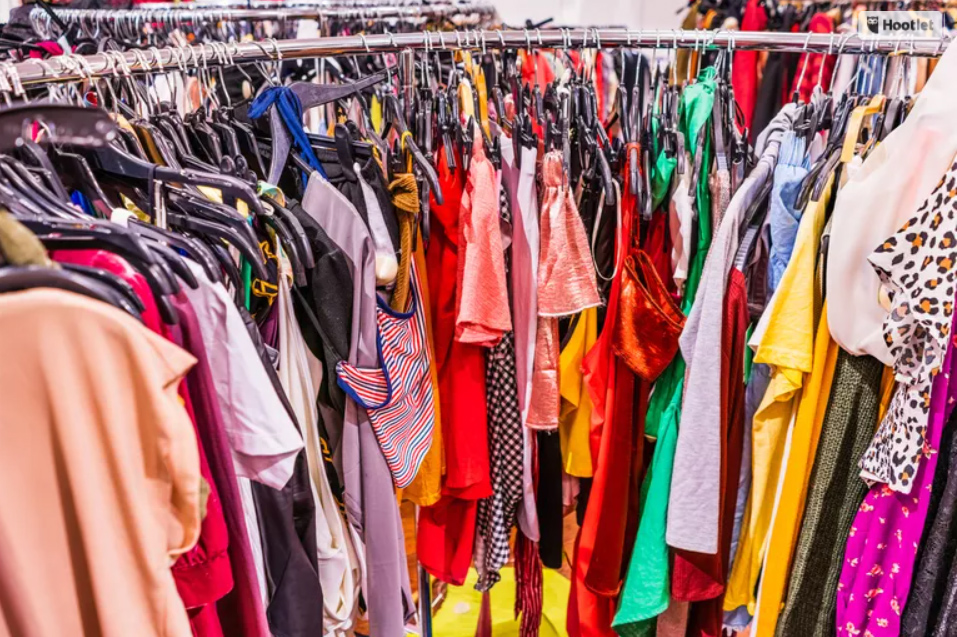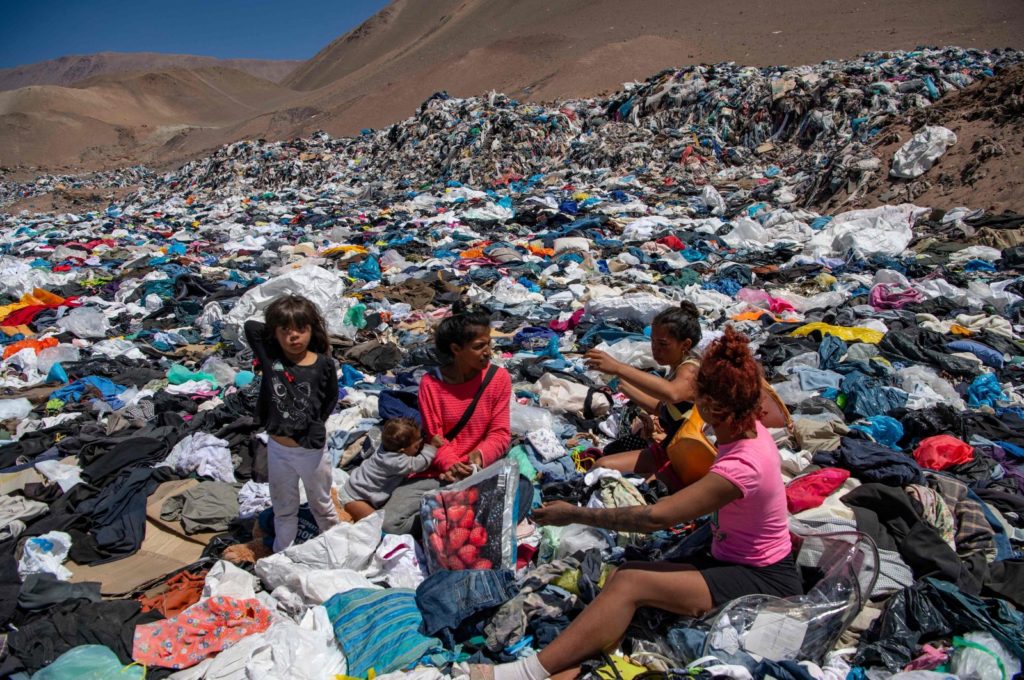Fast fashion refers to clothing designs that travel fast from the runway to stores in order to capitalize on current trends. The clothing collections are frequently inspired by styles seen on the runways during Fashion Week or from outfits worn by celebrities. Fast fashion helps ordinary people to get their hands on the hottest new look or the next great thing for a reasonable price.
Fashion trends have changed at an increasing rate over the last few decades. Expectations on labor forces to produce more and at lower prices have increased, as have pressure on customers to follow the latest trends. The fast fashion business model is based on consumers buying more garments indefinitely, while fast-fashion retailers are known for introducing new products numerous times in a week in order to stay on-trend. Consumers are enticed by brands like Zara, H&M and Topshop, UNIQLO, GAP, Missguided, Forever 21, Zaful, Boohoo, and Fashion Nova which offer ultra-cheap clothes and are constantly introducing new lines of clothing. For instance, Shein, a quick fashion retailer, had 21,139 items in its ‘New in’ section of its website as of October 2021. Fast fashion is challenging the major clothing labels’ practices of producing new collections and lines on a more regular, and seasonal basis with their new quick, trendy business model.
Now that we know what fast fashion is, what motivates it? The answers are simple – it’s cheap and it provides instant satisfaction to customers.
Fast fashion is made possible by fashion retailers’ supply chain management (SCM) advances. Its purpose is to make cost-effective clothes swiftly in response to (or ahead of) rapidly changing consumer expectations and fashion trends. It became popular due to faster manufacturing and shipping technologies, increased consumer demand for up-to-date styles, and increased consumer purchasing power—particularly among young people—to satisfy customers and give them these instant-gratification wants. However, given that consumers demand high fashion at a low price, the clothes tend to be sloppy, and so, are not meant to be worn for years or even more than once.

Fast fashion’s rise is inextricably linked to social media and celebrity/influencer culture. When a celebrity shares a photo of themselves sporting a new outfit, their fans want it, prompting fast fashion businesses to be the first ones offering it to their customers. Fast fashion firms frequently target the Gen Z demographic, who have grown up surrounded by social media and are more familiar with the influencer culture.
In fact, nearly 75% of 18-24 year-olds believe influencers are partly to blame for the surge in an unsustainable fashion. Of course, causation does not work that simply. The fast fashion industry does not only respond to consumer demand, but they also create it. The important issue is that these businesses work on the principle of constantly manufacturing new clothing lines to fulfill the insatiable and ever-changing consumer demand for all things new.
The face of fashion did not become this way overnight. Its history dates back to the 1990s.
Back then, clothing shopping used to be considered a special social occasion. Consumers would set aside money to purchase new clothing at specific times of the year. Fashion shows, which exhibited new collections and clothing lines several months before they appeared in stores, would provide the style-conscious a sneak peek at what was to come. These shows were often seasonal and each line catered to a particular style.
However, in the late 1990s, this began to change. Shopping became a form of entertainment and discretionary clothes purchasing increased. This is where fast fashion enters the scene with its low-cost and stylish knock-off garments. This made customers feel as if they were wearing the same fashions that were displayed and debuted on the runway, bringing them closer to an elite and trendy way of life.
Now, with a fashion trend so fast and convenient, there has to be ups and downs. Before getting into how problematic such a fashion trend can be, let’s talk about who actually benefits from the fast fashion model and what are its advantages.

Firstly, the business itself benefits from fast fashion. With quick production and keeping up with customer demands, businesses are booming. Fast fashion can also result in significant profits, especially if a company is able to capitalize on a trend before the competitors. Fast fashion’s quick turnover helps merchants avoid markdowns, which eat into profit margins. If any losses occur, fast-fashion enterprises can swiftly recover by introducing a new clothing line, design, or product.
Secondly, fast fashion is a boost to the economy. Customers are encouraged to visit stores more frequently as new products are regularly introduced, resulting in increased sales. Instead of replenishing stock, the store replaces items that sell out with new ones. As a result, buyers are aware that they should buy an item they like as soon as they see it. Whatever the price tag, customers are enticed to make their purchase because it is unlikely to be available for long. It is also easy to attract consumers back into stores or online markets to make more purchases because the clothes are cheap.
Thirdly, when it comes to consumer benefits, fast fashion has made it possible for customers to have the things they want, when they want them. It has also reduced the cost of clothing which is associated with a celebrity or influencer or a trend. The clothes in fast fashion bring consumers closer to the inventive, imaginative, and beautiful apparel they see their social media icons strutting. The newest trends along with having a vast wardrobe is no longer exclusive to the wealthy and famous.
As a result, proponents claim that fast fashion has democratized fashion and society as a whole. Even individuals with limited resources can buy new clothes on a regular basis, indulge in amusing or impractical stuff, and wear something different daily.
However, this quick trend production and customer satisfaction have its disadvantages. Starting from exploitative labor rights to systematic racism, the entire fast fashion trend has been called ‘disposal fashion’. Meaning, it instills a ‘throw-away’ attitude in customers, which means that fast fashion is not sustainable.

In the fashion sector, sustainability is becoming a prominent buzzword, and companies are seeking to make more environmentally responsible choices. However, despite so-called efforts, the facts show that fast fashion is harmful to the environment and to society in various ways– Environmental and Systematic Racism, economic exploitation, lack of representation of minority communities, cultural appropriation etc.
The Brundtland Report defined sustainability as fulfilling the needs of human beings without jeopardizing future generations’ ability to fulfill their own. According to the definition, we cannot strive for positive social change and go good if we ignore people and equality, and the generations to come.
In fast fashion, many of the clothes purchased are discarded after only a few uses. Hence, the textile industry generates an estimated 92 million tonnes of textile waste each year, the most of which is burned or disposed of in landfills, with fewer than 1% of used clothing being recycled into new garments. Some of this waste is made up of things that never made it to the consumer, such as outmoded clothing lines that are destroyed rather than sold. A real-life example of the waste generated by the fast fashion industry is the Atacama clothing mountain.

An Agence France-Presse (AFP) story in November 2021 revealed the awful reality of fast fashion’s waste crisis, with mounds of abandoned apparel ending up in Chile’s Atacama Desert. Each year, 59,000 tons of used clothing from Europe, the United States, and Asia are believed to come to Chile for resale. However, an estimated 39,000 tons of the cargo cannot be sold and is dumped in the desert. The heaps that are accumulating in the Atacama and in landfills around the world are not biodegradable because they are made of synthetic polymers that contain toxic chemicals.
The situation exemplifies the fashion industry’s plethora of issues. Because of the overabundance of new clothing, even the burgeoning second-hand clothing industry cannot keep up, which is aggravated by the amount of low-quality apparel that cannot be resold. While second-hand marketplaces play an important role in decreasing the carbon footprint of clothing when used to replace new purchases, a system in which clothing is shipped around the world numerous times just to be wasted is clearly unsustainable.
According to a Guardian article published in November 2021, Maxine Bédat, Executive Director of New Standard Institute, argues that fashion brands might switch “to recycled versions of synthetic fibres like polyester, often advertising these clothes as the ‘more sustainable’ or ‘conscious’ choice’. However, it is important to keep in mind that ‘sustainable’ and ‘recyclable’ are not the same although the brands use the terms synonymously. ” She further adds, “Converting plastic from bottles into clothes may actually accelerate its path to the landfill, especially for low-quality, fast-fashion garments which are often discarded after only a few uses.”
It is quite evident that fast fashion, despite being so efficient, causes a slew of problems that make it more troublesome than helpful.
This industry contributes to global warming on an enormous scale which include pesticide contamination, and massive waste production. Not being sustainable is one of the plethora of problems which come with fast fashion. It not only harms minority communities in its behind-the-scenes manufacturing but also contaminates our planet that is bound to leave a lasting effect for generations to come.






















